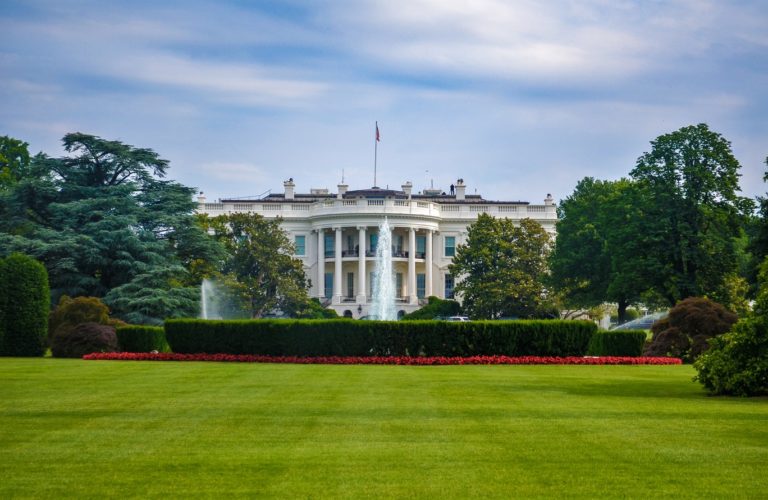President Trump based the core of his campaign on rebalancing and reordering the relationship of the United States with the rest of the world. Today the global markets are feeling the pressure of the US/China Trade war, and watchfully waiting for an outcome.
President Trump has based his campaign on a few key points: jobs, immigration, and trade.
Regarding the trade aspect, Trump looked to address the relations between the United States and their trading partners in order to produce a more balanced relationship with those countries. Once elected, Trump’s administration looked toward their closest neighbors with a focus on Mexico and Canada, and more recently extending to Europe and China.

President Trump’s stated agenda is to create more opportunities for the disadvantaged American minimum waged workers, and in turn drive the economy to a new level prosperity. Ultimately (to date) few bills and/or new trade agreements have been put in place since he took office. But since the last few weeks, his war against China may be reshaping the international trade balance and opening some new opportunities for countries like Brazil, Vietnam, or India.
Let’s go back a little bit. For the last few weeks, and until today the word tariff is making headlines, this is a result of President Trump’s tweet published on May 5th. President Trump tweeted that he will increase the tariff on Chinese goods as a result of slow trade deal negotiation: “For 10 months, china has been paying tariffs to the USA of 25% on 50 Billion Dollars of high tech, and 10% on 200 Billion Dollars for other goods. These payments are partially responsible for our great economic results. The 10% will go up to 25% on Friday. 325 Billion Dollars…” Trump and his administration are looking for greater access to the Chinese market and new opportunities within the insurance, financial services, and computing industries to name a few.
President Trump’s trade sanctions were not without consequences. In retaliation, just after the Chinese delegation left Washington D.C, China announce on May 14th that they will also be raising tariffs on $60 billion dollars of American imported goods – to match US tariffs at 25%. The new Chinese tariffs will go into effect on US goods starting June 1st. These tariffs will target key product categories such as agriculture, metals, apparel, and footwear.

China, by retaliating in this way, has left itself few options for additional leverage. However, additional leverage does still exist. For instance, China may use the following strategies:
- Increase safety inspections and delay the approbation for US imports
- Push consumers to boycotts American goods, like they did during the China and South Korea “war” in 2017.
- Increase tariffs on more products and produce. (China currently imports more than 85% of its produce).
- Target American companies producing and manufacturing in China.
Additionally, and most worrisome, China could weaken its own currency to counterbalance the negative effects of the tariffs on the Chinese economy. Which could then lead to China selling off their immense stockpile of US treasuries.
As the trade war continues to escalate with one of the largest global markets, this could have a serious negative effect on the American economy, that foreign companies cannot ignore.
As the trade war continues to escalate with one of the largest global markets, this could have a serious negative effect on the American economy, that foreign companies cannot ignore. As matter of fact, despite the strict Chinese commercial laws, foreign companies have always tried to find solutions to penetrate and reach this multi-billion dollar market.

Various options are still possible. The two most popular are:
WFOE are usually created to encourage manufacturing activities that are export oriented or for advanced technology companies, but also largely for trading, consulting, and service providers businesses.
Joint venture will allow American companies to continue their business without excessive capital cost and lowering the risk. As capital and risk will be shared with a Chinese partner as it is not always easy to build a new manufacturing facility, plant, or starting a brand-new R&D center.
China is such an important market and when production can’t be moved and the WFOE approach is not enough, joint venture can be the solution. The foreign companies need to make sure that they identify the right Chinese partner in order to form a Joint Venture and co-owned company. The benefit of having a Chinese partner is that they can offer market knowledge, financial strength, distribution channels, vendor, and supplier relationships, but also government relationships.
Editor’s Picks — Related Articles:
 “Trump’s Hold on International Trade and Finance”
“Trump’s Hold on International Trade and Finance”
 “The Race for Artificial Intelligence: China vs. America”
“The Race for Artificial Intelligence: China vs. America”
Whereas, the US or foreign partner will usually offer (depending on its market), technology, know-how, or brand identity.
The main advantages to forming a joint venture are minimizing the risk, while benefiting from a local partner that has experience in the industry. This is often also a great way to reduce administrative red tape and bureaucratic hassle.
Still, foreign companies need to conduct a strong due diligence to lower risks before making a clear joint venture agreement. Some key points to look are:
- Make sure that the general manager of the joint venture is an employee of the joint venture rather than one of the Chinese partners.
- Make a clear and equal profit-sharing program, define the purpose of the joint venture, and the contribution of each part.
Both countries have much to lose in these trade deal negotiations. This may be a long, drawn out battle; however, if an agreement can be reached, we can expect some great new opportunities, and the economic growth once promised.









